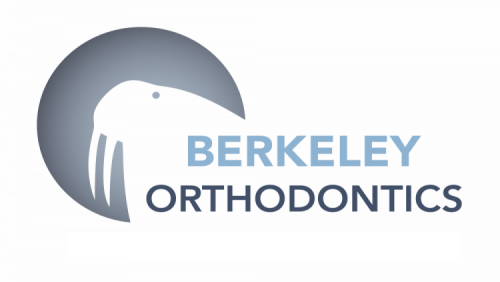Q: What are the benefits of orthodontic treatment?
Q: At what age should orthodontic treatment occur?
Q: What are some early warning signs of a bite problem?
Q: What can I eat with braces?
Q: Why do baby teeth sometimes need to be pulled?
Q: Does orthodontic treatment cause damage to roots of the teeth?
Q: What about the wisdom teeth (third molars)? Should they be removed?
Q: How long will I have to undergo orthodontic treatment?
Q: Will I still be able to play sports?
Q: Will braces interfere with playing musical instruments?
Q: Can you be too old for orthodontic treatment?
Q: Why are retainers needed after orthodontic treatment?
Q: Is orthodontic care expensive?
Q: How often will I need office visits?
Q: What is orthodontics?
A: Orthodontics (formally “Orthodontics and Dentofacial Orthopedics”) is the first specialty of dentistry that is concerned with the study and treatment of malocclusions (improper bites), which may be a result of tooth irregularity, disproportionate jaw relationships, or both. Orthodontic treatment can focus on dental displacement only or can deal with the control and modification of facial growth. In the latter case, it is better defined as “dentofacial orthopaedics.” Braces or clear aligners are appliances normally used to correct problems associated with alignment of teeth.
Q: What are the benefits of orthodontic treatment?
A: An attractive smile is just one of the benefits of orthodontic treatment. Without treatment, orthodontic problems can lead to tooth decay, gum disease, bone destruction, chewing and digestive difficulties, speech impairments, tooth loss, and other dental injuries.
Having straight teeth that fit together properly improves function, and your teeth and jaw joints can work more effectively. Straight teeth make it easier for you and your dental team to keep them clean. If you ever need a filling, crown, or bridge, your dentist can usually do better restorations if the teeth are aligned properly. Having a pleasing smile improves self-esteem, confidence, and a feeling of acceptance in daily activities.
Q: At what age should orthodontic treatment occur?
A: Orthodontic treatment can be started at any age. Many orthodontic problems are easier to correct if detected at an early age before jaw growth has slowed. In some cases, early treatment may help a patient avoid extractions, surgery, and more invasive treatment options. The American Association of Orthodontists recommends that every child first visits an orthodontist by age 7 or earlier if a problem is detected by parents, the family dentist, or the child’s physician.
Q: What is a malocclusion?
A: Malocclusion literally means “bad bite.” Most malocclusions are inherited. However, it is possible to acquire a bad bite from habits such as tongue thrusting and thumb sucking. The premature loss of baby teeth or the extraction of adult teeth can also cause the development of malocclusion.
Q: What are some early warning signs of a bite problem?
A:
- Early or late loss of primary teeth
- Difficulty in chewing or biting
- Mouth breathing
- Finger sucking or other oral habits beyond age 5
- Overlapped, misplaced, or blocked-out teeth
- Protruding teeth
- Biting the cheek or into the roof of the mouth
- Teeth that meet in an abnormal manner or do not meet at all
- Jaws that shift or make sounds
- Jaws that protrude, retrude, or contribute to facial imbalance
- Speech difficulty
Q: Will braces hurt?
A: Most patients experience some discomfort the first week after their braces are put on and immediately after an adjustment visit. Aspirin, non-aspirin pain reliever, or ibuprofen can be used to ease the discomfort.
Q: What can I eat with braces?
A: Most foods can be enjoyed just as before you got your braces. Hard, crunchy, and sticky foods can damage braces and should be avoided. Learn more about foods to avoid here.
Q: Why do baby teeth sometimes need to be pulled?
A: Pulling baby teeth may be necessary to allow severely crowded permanent teeth to come in at a normal time in a normal location. If the teeth are severely crowded, some permanent teeth will either remain impacted (teeth that should have come in, but have not) or come in to an undesirable position. To allow severely crowded teeth to move on their own into much more desirable positions, sequential removal of baby teeth and permanent teeth (usually first premolars) can dramatically improve a severe crowding problem. This sequential extraction of teeth, called serial extraction, is typically followed by comprehensive orthodontic treatment after tooth eruption has improved as much as it can on its own. Read more about serial extraction here.
Q: Does orthodontic treatment cause damage to roots of the teeth?
A: No. The overwhelming majority of orthodontic cases are completed with no adverse effects on the length or health of the roots. As teeth move, there is a possibility that some teeth may experience some blunting of root ends. This type of change occurs infrequently, but even when it occurs, does not cause any damage to the health or function of teeth as long as the bone support and the length of the crown to root ratio of teeth remain within normal limits.
Q: What about the wisdom teeth (third molars)? Should they be removed?
A: In about three out of four cases where teeth have not been removed during orthodontic treatment, there are good reasons to have the wisdom teeth removed. We will determine what is right for you. Read more about wisdom teeth here.
Q: How long will I have to undergo orthodontic treatment?
A: Treatment time will vary for each patient. It depends on the severity of the problem. It also depends on how well you do your part. Read more about your responsibilities here.
Q: Will I still be able to play sports?
A: Yes. It is recommended, however, that patients protect their teeth by wearing a mouth guard when participating in any sporting activity. Mouth guards are inexpensive, comfortable, and come in a variety of colors and patterns. If you are wearing braces, we recommend the “boil and bite” type of mouth guards available in all sporting goods stores. When braces come off, we will be glad to make you custom guards made in our in-house labs.
Q: Will braces interfere with playing musical instruments?
A: No. However, there may be an initial period of adjustment. In addition, brace covers can be provided to prevent discomfort. Clear aligners (such as Invisalign®) may also be an option if wearing braces pose a challenge with playing.
Q: Can you be too old for orthodontic treatment?
A: No. Age is not a factor, however, there are advantages to treating young people while they are still growing. About 25% of orthodontic patients in the United States are adults. If you are an adult considering orthodontic work, that treatment has changed a great deal in the last few years. Braces are more comfortable and more effective today. You can get braces in the traditional silver color or with much less visible, clear brackets. Braces can also be placed on the inside of the teeth (lingual braces) for those patients with aesthetic concerns. Clear aligners such as Invisalign are also a great option for adults. Find out more about adult treatment here.
Q: Why are retainers needed after orthodontic treatment?
A: After you complete orthodontic treatment, teeth can shift out of position if they are not stabilized. Retainers provide that stabilization and are designed to hold teeth in their corrected, ideal positions until the bones and gums adapt to the treatment changes. Wearing retainers exactly as instructed is the best insurance that the treatment improvements last for a lifetime!
Q: Is orthodontic care expensive?
A: Orthodontic fees have not increased as fast as many other consumer products. When orthodontic treatment is implemented at the proper time, treatment is often less costly than the dental care required to treat the more serious problems that can develop years later. After examining you or your child, we will review the costs involved with treatment. Financing is usually available, and our office offers customized, flexible payment programs that will meet your needs. In addition, many insurance plans now include orthodontics. Find out more about payments and insurance here.
Q: How often will I need office visits?
A: Once appliances are in place, you will see us about every four to eight weeks. Periodically, we may need to see you at shorter intervals or, if an emergency arises, we will probably need to see you that day. Learn more about orthodontic emergencies here.
If there are any other questions not listed here, or you need additional information, please contact us at questions@berkeleyorthodontics.com.



